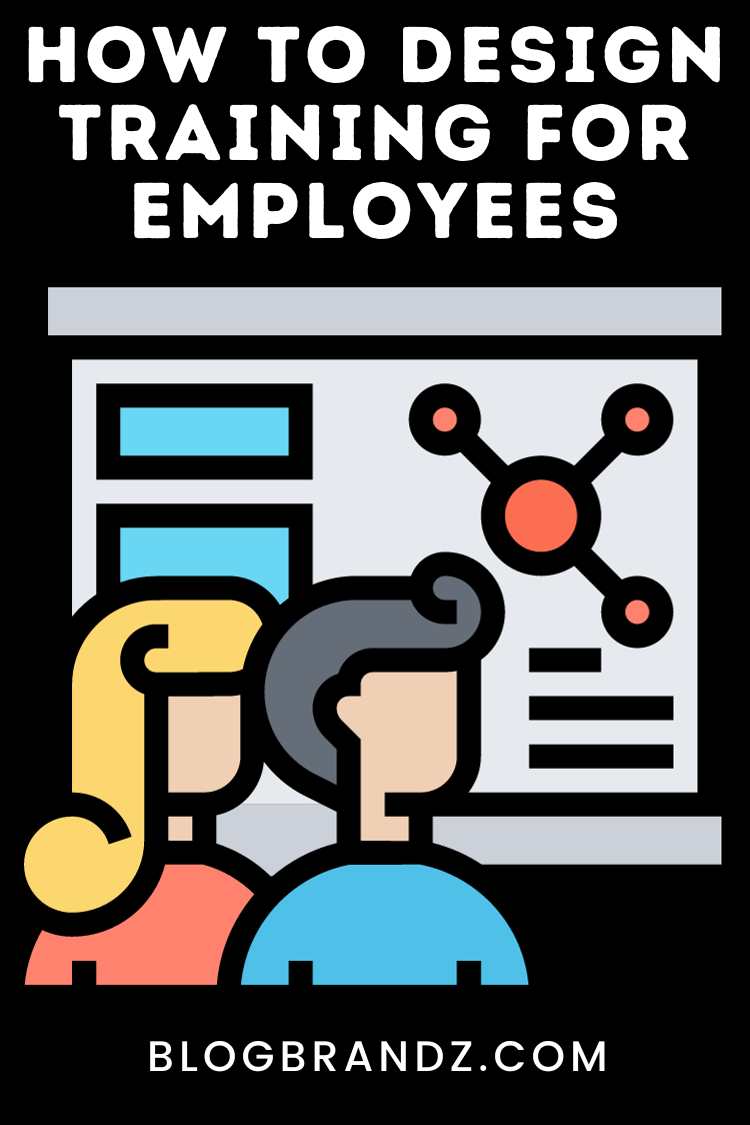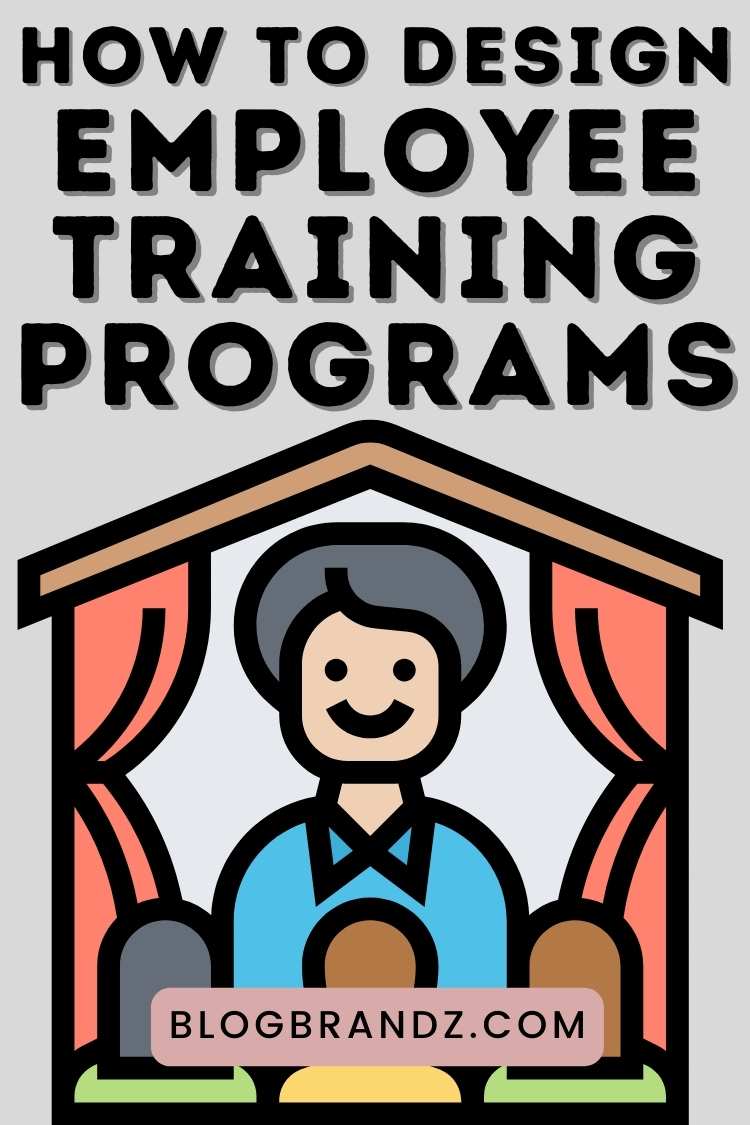Enhance your workforce with expert Chief Training Officer (CTO) development and training solutions for optimal organizational growth.
In the ever-evolving landscape of professional development and organizational growth, the role of a Chief Training Officer (CTO) stands as a pinnacle of expertise and leadership.
In today’s rapidly changing business landscape, corporate learning is a critical strategy for staying competitive and fostering employee growth. Employee training programs play a pivotal role in equipping staff with the skills and knowledge needed for success in their roles.
Organizations are increasingly committed to investing in training and professional development to empower their employees with the skills they need to excel in their roles.
CTOs are the architects of knowledge, the visionaries who steer an organization’s learning and development initiatives, and the driving force behind corporate training programs that nurture a culture of excellence.
This article is your guide to embarking on a journey that leads to the coveted position of a CTO. It’s a voyage marked by dedication, continuous learning, and the unwavering commitment to effective corporate training for employees that nurtures the talents and skills of individuals and organizations.
Join us as we unravel the steps, skills, and strategies that will pave your way to becoming a Chief Training Officer and making a lasting impact on the world of learning and development.
Contents
What is a Chief Training Officer (CTO)?
Imagine being the maestro of an orchestra, but instead of music, you’re conducting the harmonious symphony of knowledge and skill development within a cutting-edge organization. That’s precisely what a Chief Training Officer (CTO) or Chief Learning Officer (CLO) does.
As a CTO, you’re not just another executive; you’re the visionary, the driving force behind the development, and the guardian of an organization’s training programs. You wield the baton that shapes the minds and skills of the workforce, leading them toward excellence.
From crafting robust training policies to defining ambitious learning objectives, your role is akin to architecting the future of your organization. You orchestrate the alignment of knowledge with business strategy, ensuring that every training program is not just an education but a step toward success.
In this pivotal role, you’re the Chief Inspiration Officer, igniting the flames of curiosity and innovation in your workforce. You drive the company’s commitment to continuous improvement, elevating employees to their highest potential.
So, when it comes to CTOs and CLOs, it’s not just about leadership; it’s about being the guardian of growth, the conductor of competence, and the mastermind of learning, transforming organizations into thriving hubs of knowledge and skill.
Why is Corporate Training a Hot Career?
Professional trainer roles have been gaining momentum and are considered promising careers due to several factors. Here are some reasons why corporate training is considered a hot career:
#1. Lifelong Learning
In the knowledge-based economy, continuous learning and personal development have become essential. Companies are investing in training and development programs for employees to enhance their skills and boost overall productivity.
#2. Remote Work & Online Learning
The COVID-19 pandemic accelerated the adoption of remote work and online learning. This shift increased the demand for virtual training services, making these professional development training careers more accessible and relevant.
#3. Specialized Expertise
Professional trainers possess specialized knowledge and skills in their respective fields. Many forward-thinking companies employ trainers to teach essential hard and soft skills for employees to help improve their technical, communication, and teamwork abilities.
#4. Mental Health & Wellness
With a growing awareness of mental health and overall well-being, there’s a demand for life coaches, wellness coaches, and mental health training providers to help individuals learn to navigate stress, anxiety, and work-life balance.
#5. Leadership & Management
Organizations invest in leadership development and management training to build strong, effective teams. Employee training & development is a popular approach to achieving these goals.
#6. Executive Training
The entrepreneurial spirit is on the rise, with more people aspiring to start their own businesses. There is a growing need for the training and development of entrepreneurs and C-suite executives to help guide founders through the complexities of entrepreneurship.
#7. Diversity and Inclusion
Organizations increasingly recognize the importance of diversity and inclusion. Training programs specializing in this area help businesses create more inclusive and equitable workplaces.
#8. Flexibility
Training careers often offer flexibility in terms of work hours and the ability to work remotely. This flexibility can be appealing to those seeking work-life balance.
#9. Personalization
Training professionals offer highly personalized services, tailored to each individual or organization’s needs. This personalized approach can lead to more meaningful and impactful results.
How To Become a Chief Training Officer (CTO)
Imagine being at the helm of an organization’s most dynamic and transformative sector, where learning isn’t just a concept but a thriving culture. As a Chief Training Officer (CTO), you’re the orchestrator of knowledge, the maven of development, and the architect of success.
Unlock the path to becoming a Chief Training Officer (CTO) with the education, experience, and skills needed for the CTO career path.
Step #1: Establish Your Educational Foundation
Embarking on your path to becoming a Chief Training Officer (CTO) is akin to laying the first stone in a grand castle. Start by acquiring a bachelor’s degree in a field that forms the bedrock of your knowledge.
Yet, this is only the beginning, for an advanced degree, such as a certification in Instructional Design or the prestigious MBA, serves as the gateway to ascend the echelons of leadership.
These advanced degrees are your torchbearers, lighting up your route towards becoming a CTO, where you will shape the destiny of learning and development. Your journey is a stairway to excellence, each step a testament to your unwavering commitment to fostering growth, development, and innovation.
Here are some examples of advanced degrees and relevant fields that can pave the way to becoming a Chief Training Officer (CTO):
#1. MasterTrack® Certificate in Instructional Design
Master the core principles of instructional and training system design while harnessing the power of cutting-edge learning technologies in this top-ranked MasterTrack® Certificate in Instructional Design from the University of Illinois at Urbana-Champaign.
This two-course program isn’t just about theory; it’s about equipping you to conquer real-world challenges in your professional domain. Through immersive courses, you’ll uncover the secrets of a systematic design process, embracing the language and concepts vital to shaping learning systems.
Delve into instructional and learning system design models, and immerse yourself in the realm of technology-enhanced learning. Roll up your sleeves for two hands-on projects designed to catapult your career.
Craft an e-portfolio showcasing your prowess, and then, armed with insights from a case study, fashion a bespoke design plan that’s ready to revolutionize an entire organization.
Click here to learn instructional design
#2. Online Learning Design for Educators Specialization
Unlock the art of online teaching with a focus on practical skills in this Online Learning Design for Educators Specialization from Macquarie University.
Explore the essential building blocks for crafting compelling and impactful online learning experiences. Delve into the myriad challenges of the virtual classroom and harness the power of design-thinking principles to craft dynamic digital multimodal content.
Click here to learn online learning design
#3. HRCI Human Resource Associate Professional Certificate
A certificate in Human Resources or Training and Development can provide you with a strong business foundation, essential for senior leadership roles. Embark on your HR journey with the HRCI Human Resource Associate Professional Certificate, a stepping stone to a thriving career.
Equip yourself with in-demand skills to excel as an HR Associate – no prior degree or experience is required. Master the art of enhancing online learning environments and making synchronous classes truly captivating.
Understand the pivotal role of performance management and feedback in shaping harmonious employee relations and revolutionizing the HR landscape.
Click here to get an HR certificate
#4. Learning, Knowledge, and Human Development
Embark on a profound exploration into the heart of learning and development theories and their symbiotic relationship with educational technology in this course on Learning, Knowledge, and Human Development through the esteemed University of Illinois at Urbana-Champaign.
Comprising two compelling components, the first is a theoretical odyssey. It charts the evolution of learning psychology, tracing paradigm shifts from the era of ‘behaviorism’ to the rise of ‘brain developmentalism,’ culminating in the era of ‘social cognitivism.’
The second component is decidedly hands-on and practical. Apply these rich theoretical concepts to dissect technology-mediated learning environments, unraveling their hidden presuppositions. Unlock the secrets of human development and the dynamic interplay between theory and technology in the world of education.
Click here to study learning and development
#5. Certificate Program in Instructional Design (ADDIE Model)
Unleash your potential in instructional design with the Complete Instructional Designer Course for Learning and Development Professionals. Master the renowned ADDIE model to craft engaging and impactful training programs that yield results.
Equip yourself with the expertise and strategies to design, develop, implement, and evaluate training initiatives. Dive into a comprehensive journey through the five ADDIE phases, from in-depth analysis to program evaluation, with video lessons, real-world examples, and hands-on exercises.
Click here to learn the ADDIE model
In addition to traditional degrees, many professionals also pursue online courses and micro-credentials to keep up with the latest trends and technologies in the field of learning and development.
Platforms like Coursera offer a wealth of relevant courses. Your choice of degree or certification will depend on your career goals, existing qualifications, and the specific demands of your desired CTO role.
Continuing education and professional development are vital to remain competitive in the field and achieve your aspirations as a Chief Training Officer.
Step #2: Build Your Knowledge and Skills
As you set sail on your career journey, consider the roles that place you at the heart of learning and development. Your journey is a canvas waiting for the masterpiece of the CTO’s expertise.
Whether you step into the shoes of a trainer, or an instructional designer, or perhaps embrace the intricacies of human resources, each experience becomes a stepping stone toward the grand vision of a Chief Training Officer (CTO).
It’s here, in the early chapters of your career, that you forge the tools of your trade, honing your technical skills. Dive into the world of corporate LMS (learning management systems) and e-learning platforms, for they’re the canvas upon which you’ll paint the future of education and growth.
Step #3: Obtain Relevant Certifications
Certifications are your stepping stones to excellence. These credentials showcase your commitment to expertise and provide a valuable boost to your qualifications.
As you journey toward the pinnacle of your career as a Chief Training Officer (CTO), consider pursuing certifications that align with your professional path.
While not a traditional degree, certifications such as the Certified Professional in Learning and Performance (CPLP) or the Certified Chief Learning Officer (CCLO) can be invaluable in demonstrating your expertise to employers.
Certifications in project management, instructional design, or organizational development, for instance, will not only enhance your skill set but also elevate your standing in the field.
They signify your dedication to staying at the forefront of your domain, a trait that distinguishes CTOs as trailblazers in the world of learning and development.
Step 4: Progress Through Leadership Roles
Ascend the rungs of your career ladder through the accumulation of diverse experiences in the realm of training and development. Each step is an opportunity to refine your skills and broaden your understanding.
As you journey towards the coveted role of Chief Training Officer (CTO), consider embracing leadership positions such as a Training Manager or Learning and Development Director.
These roles are not just titles; they are portals to valuable insights and experiences that will set you apart as a visionary leader in the world of learning and development.
With each leadership role you embrace, you not only steer your career but also empower others on their path to growth and excellence.
Step #5: Demonstrate Success
Demonstrating your prowess as a Chief Training Officer (CTO) requires showcasing a track record of accomplishments that resonate with your organization’s mission.
Your mettle shines as you illuminate your successes in enhancing training programs. You’re the maestro who orchestrates the transformation of learning, ensuring it seamlessly harmonizes with the grand symphony of your organization’s strategic objectives.
You can proudly point to milestones where you elevated employee performance, witnessed tangible improvements in their skills and competencies, and celebrated the growth of a more capable workforce.
Your achievements are living proof of your commitment to the art of learning and development. They echo the impact of your leadership, forging a path towards a future where the organization thrives, not just survives.
Step #6: Network and Collaborate
In the realm of professional growth, your network is the treasure chest, a source of endless potential. To become a distinguished Chief Training Officer (CTO), one must embark on a journey of connections, collaborations, and thought leadership.
Picture yourself at industry events, the vibrant hubs of knowledge and innovation. Here, you engage with peers, share insights, and kindle the flames of collaboration. As you connect with fellow visionaries, the tapestry of your network expands.
But networking isn’t just about collecting contacts; it’s about giving back to the community. Your wisdom, honed through experience, becomes a beacon to guide others.
Whether through articles, presentations, or mentoring, you generously share your knowledge. In doing so, you cement your reputation as a thought leader, illuminating the path for others and solidifying your role as a true CTO.
Step #7: Pursue Advanced Education (Optional)
If your aspirations as a Chief Training Officer (CTO) are anchored in the world of academia or research, then doctoral studies can be your golden ticket to the uppermost echelons of the field.
Envision yourself delving into the depths of educational theory, research methodologies, and cutting-edge concepts. Your doctoral journey is not just a pursuit of knowledge; it’s a relentless quest to contribute to the collective wisdom of the educational landscape.
With a Ph.D. or Ed.D. by your side, you can carve a niche where you influence the future of learning and development. Your expertise becomes the cornerstone upon which academic institutions and research centers build their edifices of innovation.
As an academic or research-focused CTO, you’re not just a leader; you’re a luminary who shapes the very core of the field.
Step #8: Apply for CTO Positions
As the chapters of your career unfold, there comes a moment when the stars align, and the path to becoming a Chief Training Officer (CTO) beckons. It’s a moment of readiness, a culmination of your expertise and experience.
In this auspicious time, your vigilant eye scans the horizon, keeping watch for those coveted CTO or Chief Learning Officer (CLO) job openings. It’s the moment you’ve prepared for, the culmination of your journey.
With meticulous care, you tailor your resume, crafting it into a testament to your remarkable journey. Each achievement, each milestone, is etched in prose that reflects your unwavering commitment to learning and development.
Your cover letter, like a masterstroke, resonates with your accomplishments and qualifications. It’s not just a letter; it’s a call to action, inviting organizations to witness the transformative leader you’ve become.
When that moment arrives, seize it, confident in the extraordinary narrative you’ve written throughout your career.
Your journey has led you to this precipice, and as you step into the role of a CTO, you step into the future of learning and development, where your wisdom and vision will guide others toward their own moments of excellence.
Step #9: Continuously Develop and Innovate
In the world of Chief Training Officers (CTOs), there’s no room for complacency. It’s not a static role but a vibrant, ever-evolving journey.
The terrain of education and training is as dynamic as the shifting sands, and to thrive as a CTO, you must embrace change. As the steward of learning and development, it’s your duty to stay on the cutting edge.
Seek out emerging technologies, for they are the tools that shape the future of education. Embrace trends, for they are the currents that carry your organization forward. And, above all, adhere to the best practices, for they are the compass that keeps you on course.
As you navigate this dynamic journey, your commitment to continuous learning and growth isn’t just a choice; it’s the fuel that propels your organization and your career toward a future where learning knows no bounds. In the world of CTOs, you’re not just an expert; you’re a pioneer of progress.
Step #10: Excel as a CTO
As you ascend to the esteemed role of Chief Training Officer (CTO), envision yourself as the maestro of a grand symphony of learning within your organization.
Your baton is not just a tool; it’s an emblem of your leadership, your commitment to fostering a learning culture, and your dedication to excellence.
You orchestrate the transformation of your organization, demonstrating the tangible impact of your training programs. Each note you strike resonates with enhanced skills, elevated performance, and a workforce primed for success.
Your department has become a hub of innovation and growth, a testament to your unwavering commitment to advancement. In the corridors of your organization, you’re more than a leader; you are the beacon, illuminating the path of development and success.
Becoming a Chief Training Officer is a voyage marked by commitment, growth, and the relentless pursuit of knowledge. Your journey will shape not just your career but the entire organization’s approach to learning and development.
Your legacy is a thriving culture of learning, where potential knows no limits, and excellence is the destination. You will be the architect of transformation, the maestro of change, and the harbinger of progress in the realm of training and development.
Coaching & Training FAQs
#1. What’s The Difference Between a Corporate Trainer and a CTO?
The Corporate Trainer and Chief Training Officer (CTO) have distinct roles in the field of learning and development, each with specific responsibilities and levels of leadership. Here are the key differences:
Corporate Trainer:
- Role: A corporate trainer is responsible for delivering training programs to employees within an organization. They focus on teaching specific skills, knowledge, or competencies necessary for employees to perform their jobs effectively.
- Content Delivery: Corporate trainers are primarily involved in content delivery, which includes designing, organizing, and conducting training sessions. They ensure that employees acquire the necessary skills and knowledge.
- Audience: Their primary audience is the employees of the organization, and they work to improve job-related skills and performance.
- Scope: Corporate trainers typically focus on specific job-related training, whether it’s related to product knowledge, compliance, technical skills, or soft skills.
- Hierarchy: They are usually part of the Human Resources or Learning and Development department, and they report to higher-level management or, in some cases, to a CTO.
Chief Training Officer (CTO):
- Role: The CTO is a senior executive responsible for overseeing the entire training and development function within an organization. They define the strategic direction for learning and development and align it with the company’s goals.
- Strategic Leadership: CTOs are focused on developing a strategic vision for training and ensuring that all training initiatives support the organization’s growth and development.
- Responsibilities: Their responsibilities go beyond training delivery. They design comprehensive learning strategies, manage training budgets, assess the effectiveness of programs, and may even oversee the development of e-learning platforms or learning management systems.
- Audience: CTOs have a broader perspective and are responsible for the development and growth of the entire workforce, focusing on both individual and organizational development.
- Hierarchy: CTOs are high-ranking executives who often report directly to the CEO or a member of the executive leadership team.
In summary, while corporate trainers specialize in delivering training programs to employees to improve specific job-related skills, CTOs hold a strategic leadership role that involves setting the vision for an organization’s training and development, managing budgets, and ensuring that all training initiatives align with the company’s long-term objectives.
The CTO’s role is more encompassing and strategic, with a focus on the overall growth and development of the organization.
#2. What’s The Difference Between Coaches, Trainers, L&D Specialists & Facilitators?
Coaches, trainers, Learning and Development (L&D) Specialists, and facilitators are professionals who play distinct roles in guiding and supporting individuals or groups in their learning, development, and decision-making processes.
While they all share a commitment to facilitating growth and improvement, they differ in their specific roles and responsibilities.
Coaches:
- Role: Coaches work one-on-one with individuals to help them achieve specific personal or professional goals, develop skills, or overcome challenges.
- Focus: Coaches often focus on personal development, career development, or performance improvement. They help clients identify their goals, assess their current situation, and create action plans.
- Approach: Coaches use a combination of questioning, active listening, and feedback to guide clients toward self-discovery and goal achievement.
Trainers:
- Role: Trainers work with individuals or groups to impart specific skills, knowledge, or competencies. They deliver structured training programs or workshops.
- Focus: Trainers concentrate on transferring skills and knowledge relevant to a particular job, task, or topic. Their emphasis is on practical training.
- Approach: Trainers use instructional methods, hands-on exercises, and assessments to ensure participants acquire and apply the skills being taught.
Learning and Development (L&D) Specialists:
- Role: L&D Specialists are typically employed within organizations and are responsible for designing, implementing, and managing employee training and development programs.
- Focus: L&D Specialists address broader organizational goals, including employee performance, leadership development, and overall employee growth.
- Approach: They create and oversee comprehensive training programs, often using a mix of in-house and external resources.
Facilitators:
- Role: Facilitators guide group discussions, decision-making processes, or workshops to help participants collaborate effectively and achieve common objectives.
- Focus: Facilitators work with groups in various contexts, such as team building, conflict resolution, or strategy development.
- Approach: They create an open and inclusive atmosphere, manage group dynamics, and structure discussions and activities to achieve specific outcomes.
What are the Commonalities Between the Above?
- Learning and Development Focus: All these professionals are concerned with enabling learning and development, whether it’s individual or group-based.
- Customization: They often tailor their approach to meet the unique needs and goals of their clients or groups.
- Needs Assessment: Coaches, trainers, L&D Specialists, and facilitators may assess current performance, skill gaps, or challenges as part of their work.
- Adaptation: They all adapt their approaches based on the dynamics and needs of their clients or groups, aiming to improve effectiveness.
- Communication Skills: Effective communication and active listening are essential skills for all these roles.
- Evaluation and Feedback: They often seek feedback from participants or clients and evaluate the effectiveness of their interventions to make improvements.
- Professionalism and Ethics: Upholding professional standards and ethical principles, such as confidentiality, integrity, and respect, is crucial for these roles.
In summary, coaches, trainers, L&D Specialists, and facilitators share commonalities in their commitment to facilitating growth and development, but they each have unique roles and areas of specialization.
The differences lie in the nature of their clients (individuals, groups, or organizations), their specific goals (personal development, skill acquisition, organizational learning), and their methods and approaches.
#3. Is ICF Training Certification Required for Becoming a CTO?
No, ICF (International Coach Federation) training certification is typically not a requirement for becoming a Chief Training Officer (CTO). While both roles involve aspects of coaching and training, they are distinct in their focus and responsibilities.
A Chief Training Officer primarily oversees the development and implementation of an organization’s training programs and is responsible for aligning training initiatives with the company’s strategic goals.
This role typically requires expertise in instructional design, adult learning theory, and organizational development, among other skills. On the other hand, ICF courses are generally associated with coaching roles, where individuals work one-on-one with clients to help them achieve personal or professional goals.
To become an ICF-certified coach, you would need to complete specific coaching training and meet certification requirements. While CTOs may use coaching techniques within their training programs, they are not required to complete ICF coaching certification.
The qualifications for a CTO typically revolve around education, experience in training and development, and expertise in the field of organizational learning.
Training & Coaching Business Tips
- Become a Trainer with Jack Canfield’s Train the Trainer Online Program
- E-Training Tips to Create an Engaging Virtual Learning Environment
- How To Start An Online Training Institute & Sell Online Courses
- Personal Branding for Coaches: How Do I Market My Coaching Business?
- 5 Secrets Business Coaches Know About Building a Coaching Business
- How to Overcome Speech Anxiety & Learn the Art of Public Speaking
- How to Be Famous & Get Recognition in Your Industry
- Learn Soft Skills and Personality Development for the Future of Work
© 2023, Priya Florence Shah. All rights reserved.
Priya Florence Shah is a bestselling author and an award-winning blogger. Check out her book on emotional self-care for women. Priya writes short stories and poetry and chills with her two-legged and four-legged kids in her spare time.
Discover more from Business & Branding Tips
Subscribe to get the latest posts sent to your email.




















